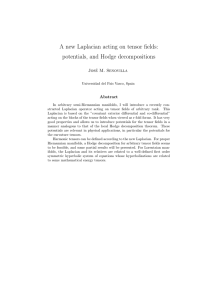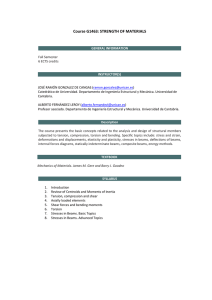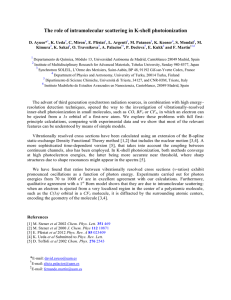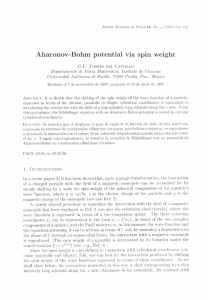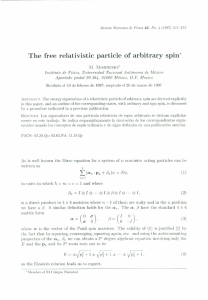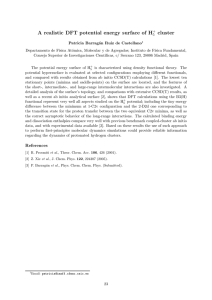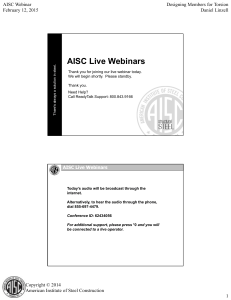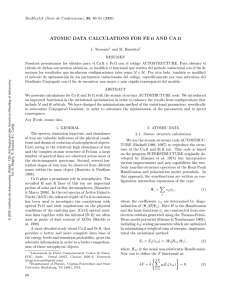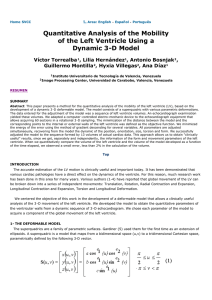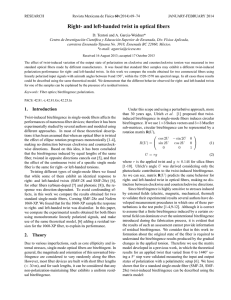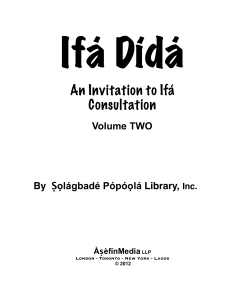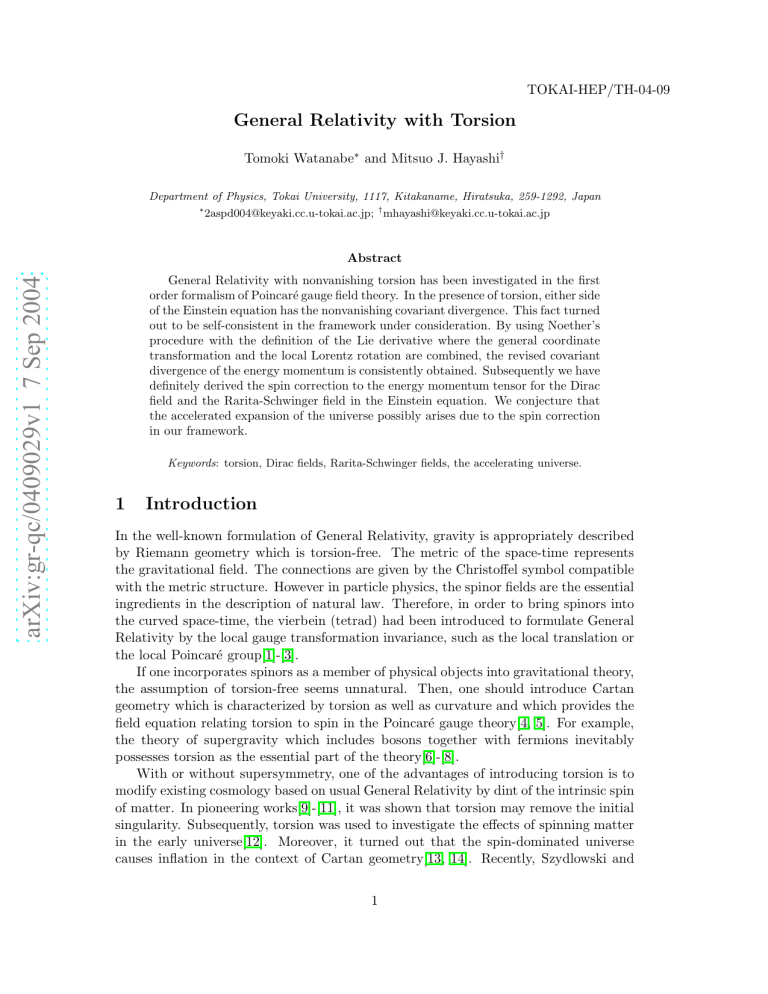
TOKAI-HEP/TH-04-09 General Relativity with Torsion Tomoki Watanabe∗ and Mitsuo J. Hayashi† Department of Physics, Tokai University, 1117, Kitakaname, Hiratsuka, 259-1292, Japan ∗ [email protected]; † [email protected] arXiv:gr-qc/0409029v1 7 Sep 2004 Abstract General Relativity with nonvanishing torsion has been investigated in the first order formalism of Poincaré gauge field theory. In the presence of torsion, either side of the Einstein equation has the nonvanishing covariant divergence. This fact turned out to be self-consistent in the framework under consideration. By using Noether’s procedure with the definition of the Lie derivative where the general coordinate transformation and the local Lorentz rotation are combined, the revised covariant divergence of the energy momentum is consistently obtained. Subsequently we have definitely derived the spin correction to the energy momentum tensor for the Dirac field and the Rarita-Schwinger field in the Einstein equation. We conjecture that the accelerated expansion of the universe possibly arises due to the spin correction in our framework. Keywords: torsion, Dirac fields, Rarita-Schwinger fields, the accelerating universe. 1 Introduction In the well-known formulation of General Relativity, gravity is appropriately described by Riemann geometry which is torsion-free. The metric of the space-time represents the gravitational field. The connections are given by the Christoffel symbol compatible with the metric structure. However in particle physics, the spinor fields are the essential ingredients in the description of natural law. Therefore, in order to bring spinors into the curved space-time, the vierbein (tetrad) had been introduced to formulate General Relativity by the local gauge transformation invariance, such as the local translation or the local Poincaré group[1]-[3]. If one incorporates spinors as a member of physical objects into gravitational theory, the assumption of torsion-free seems unnatural. Then, one should introduce Cartan geometry which is characterized by torsion as well as curvature and which provides the field equation relating torsion to spin in the Poincaré gauge theory[4, 5]. For example, the theory of supergravity which includes bosons together with fermions inevitably possesses torsion as the essential part of the theory[6]-[8]. With or without supersymmetry, one of the advantages of introducing torsion is to modify existing cosmology based on usual General Relativity by dint of the intrinsic spin of matter. In pioneering works[9]-[11], it was shown that torsion may remove the initial singularity. Subsequently, torsion was used to investigate the effects of spinning matter in the early universe[12]. Moreover, it turned out that the spin-dominated universe causes inflation in the context of Cartan geometry[13, 14]. Recently, Szydlowski and 1 Krawiec studied the possibility that the cosmological model with spinning matter might be a candidate to explain the accelerated expansion of the present universe[15], and concluded that the spinning matter is not an alternative to the cosmological constant but is admissible. In such cosmology, it is important to note that the “spinning fluid” filling in the universe is constructed under the assumption that thermodynamical variables can be introduced[16]. In this paper, having a perspective to establish a new approach to cosmology, we investigate the modifications caused by torsion in General Relativity by revisiting the Poincaré gauge field theory of gravity without the supersymmetry. Starting from the first order formalism, where the vierbein and the spin connection are independent fields, we derive the revised conservation law of the energy momentum tensor with torsion by constituting an alternative Lie derivative including the local Lorentz transformation, which seems complementary to the method in Ref.[1]. Because the torsion and the spin density of matter fields are convertible, a part of the Einstein tensor originated from torsion can be regarded as correction to the energy momentum tensor due to the spin density. In particular, we definitely derive the correction to the energy momentum tensor for the Dirac field and the Rarita-Schwinger field which is expressed in terms of products of the spin density, and prove the accelerated expansion of the universe can arise without introducing the thermodynamical variables. This paper is orgnized as follows. In section 2, in order to give some definitions, we briefly review the vierbein formalism[8, 17] which is convenient to describe the couplings of gravity to spinor fields[18, 19]. It will turn out that the vierbein formalism produces an extension of usual Einstein’s theory. We turn section 3 to derive explicitly the revised formulae due to the torsion [1, 2, 3, 4, 18]. Subsequently, the concrete incorporation of the Dirac and Rarita-Schwinger fields into General Relativity will be demonstrated. Finally, in section 4 we present our conclusions. 2 2.1 Vierbein formalism Vierbein postulate The metric tensor gµν adequately describes gravitational theory which contains matter fields consist of scalar, vector, and tensor fields. Vectors in this theory carry linear representation of GL(4, R), if the connection Γ which belongs to gl(4, R) is given. Let us demand that a scalar product should be invariant under the parallel transport, i.e., the metricity condition ∇ρ gµν = 0, (1) where the covariant derivative is defined by using the connection Γρµν , which is not necessarily symmetric, as ∇ν V µ ≡ ∂ν V µ + Γµρν V ρ . We will not deal with non-metricity here. We assume that one can always take the Minkowski metric ηab = diag(+, −, −, −) at any space-time point. In a word, the world distance requires to be expressed in two ways: ds2 = gµν dxµ dxν = ηab dX a dX b . One can choose an orthonormal frame eaµ there, which transforms as a vector under both GL(4, R) and SO(3, 1) according to each index. Then, eaµ gets more essential than gµν ; the metric can be expressed by a square of eaµ : gµν = ηab eµa eνb , (2) 2 which behaves as a GL(4, R) (world) tensor and a SO(3, 1) (Lorentz) scalar. In general, eaµ and eµa project world vectors V µ onto Lorentz components V a and vice versa, e.g., V a = eµa V µ . Note that gµν has 10 components while eaµ has 16 components. In order that the world distance in two ways be identified, the defference 6 components must be compensated; the Lorentz transformation Λab plays this role. eaµ is called vierbein or tetrad. Let ωµab be the connection for the orthonormal frame. The metricity condition (1) in terms of ηab and ωµab reduces to the Lorentz algebra so(3, 1). Therefore, by using ωµab , we can define the covariant derivative for any field φ which transforms under the irreducible representation of SO(3, 1): Dµ φA ≡ ∂µ φA + (Ωµ )AB φB , where the index A means a general type or components of fields and Ωµ ≡ (i/2)ωµab Sab is an element of so(3, 1). For example, Dµ acts on a spinor as i Dµ ψ = ∂µ ψ − ωµab σab ψ, 4 (3) since the generator Sab for spinors is given by Sab = −σab /2 ≡ −(i/4)[γa , γb ]. Here γa indicates the γ-matrices which always take constant values. Generically, under the local Lorentz transformation D[Λ(x)], Dµ φ covariantly transforms as Dµ φ → D[Λ(x)](Dµ φ), while Ωµ obeys an inhomogeneous transformation law; the infinitesimal representation D[Λ(x)] = 1 + (i/2)θ ab (x)Sab leads to ωµab → ωµab + θ ac ωµcb + θ bc ωµac − ∂µ θ ab . (4) Also note that 40 constraints of the metricity condition (1) balance the difference between 24 components of ωµab and 64 components of Γρµν . ωµab (or Ωµ ) is sometimes called spin connection. If, as more essential quantity, the vierbein is employed to describe gravity instead of the metric, then one may wish to establish a more fundamental condition for the vierbein to induce the metricity condition (1). Since eaµ has both world and Lorentz indices, we should replace ∇µ in Eq.(1) by Dµ which operates on these indices: Dν eaµ ≡ ∂ν eaµ + Γµρν eaρ + ωνab ebµ = 0. (5) We call the formula (5) as “vierbein postulate”. This postulate seems to determine a form of the spin connection, i.e., ωµab = gρν eρa ∇µ eνb . Actually, this form is however not unique to satisfy the above transformation law. One can so divide ωµab into two parts that one of them follows the law and another transforms as a Lorentz tensor and besides a world vector (see Eq.(10) and Eq.(11)). This means that there is an important freedom on the choice of ωµab when one demands the Lorentz covariance of the theory. 2.2 Curvature and torsion Now we can define curvature. The field strength Fµν ≡ [Dµ , Dν ] also belongs to so(3, 1); curvature tensor Rabµν is defined to be its coefficients: Fµν = (i/2)Rabµν Sab . From the definition of Dµ and so(3, 1) algebra, we have Rabµν = ∂µ ωνab + ωµac ωνc b − ∂ν ωµab − ωνac ωµc b . 3 (6) By definition, it follows that Rabµν transforms as a world and Lorentz tensor of second rank respectively. We can therefore construct a world tensor of fourth rank by projecting on the world components, Rρσµν = eaρ ebσ Rabµν , which is just equal to the form of usual Riemann curvature Rρσµν = ∂µ Γρσν + Γρλµ Γλσν − ∂ν Γρσµ − Γρλν Γλσµ , (7) together with the vierbein postulate (5), Γρµν = eaρ Dν eµa . Thus, it is conceivable that ωµab may also be more essential than Γρµν . If once ωµab is given, the covariant derivative for any spinor (3) can be defined. Because spinor is a world scalar, its action with Eq.(3) is just desired one, i.e., we can form gravitational theory which includes spinor fields by starting from eaµ , ωµab and the vierbein postulate. Note that the vierbein postulate (5) suggests Γρµν is not necessarily symmetric. An antisymmetric part of Γρµν which is a world tensor is called torsion: C ρµν ≡ Γρµν − Γρνµ ≡ 2Γρ[µν] . (8) If torsion is nonzero, the Einstein tensor Gµν constructed by the curvature (7) becomes asymmetric. Consequently, the energy momentum tensor of matter Tµν , which is usually defined as a symmetric tensor, has to be redefined; we will demonstrate the redefinition in the next subsection. Torsion (8) can be written as C = C(e, ∂e, ω) in combination with the vierbein postulate (5). Inversely, ω = ω(e, ∂e, C) can be found; using Eq.(1) and Eq.(8), one can split up Γρµν into ρ Γρµν = + K ρµν , (9) µν ρ ρ where µν = νµ is Christoffel symbol and K ρµν is called contortion, given by C ρµν : K ρµν = (C ρµν + Cµν ρ + Cνµρ )/2. We find from Eq.(9) a similar expression: ωµab = ω̃µab + K abµ , (10) 1 ω̃µab = eaρ ∂[µ eρ]b + eaρ ebσ ecµ ∂[σ eρ]c − (a ↔ b), 2 (11) where ω̃µab depends on only eaµ 1 : and K abµ ≡ eρa ebµ K ρµν is Lorentz-tensorial as well as world-vectorial since K ρµν is a pure world tensor. Clearly, K abµ does not contribute to the Lorentz transformation law (11) of Ωµ . In fact a differentiation of eaµ in Eq.(11) just causes the inhomogeneous term in the transformation law (4). In other words, the Lorentz covariance of the theory can be realized if only ω̃µab is introduced as the connection. Thus one can choose ωµab so that torsion vanishes in gravitational theory which contains spinor fields. However, we leave torsion nonvanishing; our main purpose is to view the modifications due to torsion in General Relativity. 1 We will use a tilde to indicate a quantity irrelevant to torsion throughout this paper. 4 2.3 Field equations Let us formulate the field equations which gravity and torsion follow in the vierbein formalism[1]-[3]. For this purpose, it is convenient to take the first order (Palatini) formalism[6, 3, 20]. In usual General Relativity, this method is to regard the metric and the symmetric connection as independent. Indeed, without the metricity condition, the variation of the Einstein-Hilbert action Sg (g, Γ, ∂Γ) with respect to Γρµν gives the unique expression of the Christoffel symbol as a field equation Γ = Γ(g, ∂g). In other words, the metricity condition can be obtained as the field equation, and then the first order and the second order formalism are equivalent on the classical level. If the connection is asymmetric, then one has to take into account the additional independent variable K ρµν which is so far unknown. However, by substituting the metricity condition as the field equation into the variation of Sg with respect to K ρµν , the desired equation which torsion follows can be found[1]. Therefore, alternatively ρ starting with the independent variables gµν , asymmetric Γρµν = µν + K ρµν , and the metricity condition as a demand, we can also obtain the field equation for torsion. We have now independent variables eaµ and ωµab in the Einstein-Hilbert Lagrangian: e e µ e ν Rabµν (ω, ∂ω), (12) 16πG a b where e ≡ det(eaµ ) and G is the gravitational constant. Because Eq.(10) has been obtained, one can expect to get the field equation for torsion by imposing the vierbein postulate on the variation of the Lagrangian (12) with respect to ωµab on the analogy of the above-mentioned scheme. On the other hand, the Lagrangian of matter fields has the independent variables φ and ∂φ additionally. Suppose that the matter fields minimally couple to gravity, i.e., the ω-dependence of the matter Lagrangian appears only through the covariant derivative Dµ φ. And if the Lagrangian contains the world covariant derivative operator, we opt to convert them into the Lorentz covariant derivative, e.g., ∇µ V ν = eaν Dµ V a . The vierbein postulate (5) guarantees this conversion to be always possible. Thus we can set the independent variables in the matter Lagrangian as Lg (e, ω, ∂ω) = − Lm = Lm (e, ω, φ, ∂φ) = Lm (e, φ, Dφ). (13) Then, the equation of motion for φ is readily derived: ∂Lm ∂Lm ∂Lm − (Dµ − Cµ ) + Γρνµ (sνρ )AB = 0, A A ∂φ ∂Dµ φ ∂Dµ φB (14) where Lm ≡ Lm /e, Cµ ≡ C νµν , and sνρ is the representation matrix of the infinitesimal general coordinate transformation appropriate to φ. The last term in Eq.(14) becomes significant only when the index A carries world components; Rarita-Schwinger field is a candidate for such a field. Although, of cause, the usual variational method (which φ and ∂φ are regarded as independent) also yields the same equation of motion, the concrete calculation is typically tedious. The merit of taking variable Dµ φ as independent is to offer an easier method of the calculation to find the equation of motion. 5 Now, as is well-known, the variation of the total Lagrangian L = Lg + Lm with respect to eaµ gives the Einstein equation in the vierbein formalism: 1 Gµa ≡ Rµa − eµa R = 8πG Tµa , 2 (15) with the Ricci tensor Rµa ≡ ebν Rbaνµ and the Ricci scalar R ≡ eaµ ebν Rabµν . For the Lagrangian of matter, we will present specific forms in the section 3.2. Let us define world tensors as Gµν ≡ eaν Gµa , Tµν ≡ eaν Tµa . It is obvious that these are not symmetric, i.e., one should distinguish Gµa from Gaµ etc. The latter means in our notation Gaµ = eaν ebµ Gν b . The asymmetric Einstein equation is found in this way: Gµν = 8πG Tµν . (16) Next, we consider the variation of the action with respect to ωµab . As mentioned above, using the vierbein postulate after taking the variation of Eq.(12), we find i ∂Lm 1 µ C ab + 2e[aµ Cb] = (Sab )AB φB ≡ S µab . (17) − 16πG 2 ∂Dµ φA where C µab ≡ eaν ebρ C µνρ , and Ca ≡ C µaµ . The l.h.s. of Eq.(17) is, as expected, represented in terms of torsion. The source of torsion is called spin density. Note that, contrary to curvature, torsion does not propagate around matter; because torsion has 24 components and Eq.(17) consists of 24 equations, C µab = 0 is a unique solution if matter does not exist or if the Lagrangian of matter does not depend on ωµab 2 . For example, in a system described by the Lagrangian of scalar or Yang-Mills fields, the torsion and the spin density vanish identically. Then the Einstein equation (16) returns to the usual one. This is of cause a result of the fact that gravitational theory without spinors does not need the spin connection. The usual Einstein equation is adequate enough to deal with the system of integer spin. 3 General Relativity with torsion 3.1 Some modified formulae in General Relativity The existence of torsion alters some points in General Relativity, since Einstein’s view point is to suppose Γρµν is symmetric. First, let us calculate the covariant divergence of asymmetric tensors Gµν and Tµν . The previous definition of curvature is rewritten as [Dµ , Dν ]V a = Rabµν Vb , which corresponds in the world components to [∇µ , ∇ν ]V ρ = Rρσµν V σ + C σµν ∇σ V ρ , (18) where Rρσµν is already given by Eq.(7). The Bianchi identity following from Eq.(18) yields the covariant divergence of the Einstein tensor 3 : 1 Rλσρν − Rρλ gσν . (19) ∇µ Gνµ = C ρσλ 2 2 On the subject of propagational torsion, for example, see Refs. [21, 3]. The reason for the contraction on the right side of indices is due to our notation, Rµν ≡ eaν Rµa = eaν ebρ Rbaρµ . 3 6 Eq.(19) implies that, through the Einstein equation (16), the existence of torsion forces the usual covariant conservation law of the energy momentum tensor to be revised. Let us actually verify how this is done in the r.h.s. of Eq.(16). In usual way, the symmetric energy momentum tensor of matter τ(µν) is defined by varying the action of matter with respect to gµν . If torsion vanishes, because of the invariance of the matter action under a translation xµ → xµ + ξ µ (x), the covariant ˜ µ τ(νµ) = 0 holds, where ∇ ˜ µ is the covariant derivative based on the conservation law ∇ Christoffel symbol. In the case which torsion is nonvanishing, we should carefully examine the invariance of the action[1, 2, 4]. Let us first consider the system described by world tensors without the vierbein and the spin connection for comparison with the vierbein formalism; let Lm = Lm (g, φ, ∇φ). According to Noether’s procedure, when the equation of motion for φ is fulfilled, the invariance of the action under xµ → xµ + ξ µ (x) with the Lie derivatives (20) δL gµν = 2 ∇(µ ξ ν) + ξ σ gρ(µ C ν)ρσ , yields δL Γρνµ = −∇µ ∇ν ξ ρ − Rρνσµ ξ σ + ∇µ (C ρσν ξ σ ), (21) ¯ µ (τ(νµ) + ∇ ¯ ρ sρµν ) = C µρν (τ(µρ) + ∇ ¯ σ sσρµ ) + sµρσ Rσρµν , ∇ (22) i φA → φA + fµν(A) ∂ν ξ µ + θ ab (Sab )AB φB , 2 (23) ¯ µ ≡ ∇µ − Cµ and sµνρ ≡ (∂Lm /∂∇µ φA )(sνρ )A φB . where ∇ B ¯ ρ sρµν is responsible for the antisymmetric part of τµν , Thus we may conjecture that ∇ although it is not yet clear whether sρµν physically means the spin density or not. Note that, if torsion does not exist, sρ[µν] vanishes identically and then the usual conservation law is recovered from Eq.(22). To observe this more manifestly, performing the partial integration of τ(µν) in the change of the action with the Lie derivative (20), we find ¯ µ τ(νµ) = C (µρ)ν τ(µρ) . ∇ ˜ µ τ (νµ) = 0 always holds However, even if torsion exists, one can easily prove that ∇ ˜ in itself by using the definition of ∇µ and ∇µ . This means that the existence of torsion does not alter the usual form of the conservation law. Next, we consider the invariance of the action in the vierbein formalism. In this case, we have to establish the alternative Lie derivative with the local Lorentz transformation in mind. Our strategy to do this is to distinguish the local Lorentz transformation from the general coordinate transformation. On this subject, although Hehl et.al.[1] organized the “active” and “passive” local Poincaré transformation by fixing the tetrad frame or the fields themselves, we wish to redefine the Lie derivative corresponding to their work. Let us require the matter action to be invariant under both the general coordinate transformation xµ → xµ + ξ µ (x) and the Lorentz rotation X a → X a + θ ab (x)X b . For this combination, any fields change as ν(A) where fµ derivative: denotes the generic coefficient of ∂µ ξ ν . Thus we define the combined Lie i δL∗ φA ≡ fµν(A) ∂ν ξ µ + θ ab (Sab )AB φB − ξ µ ∂µ φA . 2 7 (24) In particular, Eq.(24) applies to the vierbein as δL∗ eaµ = eaν ∂ν ξ µ + θab ebµ − ξ ν ∂ν eaµ , (25) which turns out to be consistent with the Lie derivative of the metric (20) via Eq.(2) and the antisymmetricity of θ ab , i.e., δL∗ (eaµ eaν ) = δL gµν . As for the spin connection, since the Lorentz transformation law is given by Eq.(4), we have δL∗ ωµab = −ωνab ∂µ ξ ν + θ ac ωµcb + θ bc ωµac − ∂µ θ ab − ξ ν ∂ν ωµab . (26) Hence, in the same manner as the previous case, but replacing δL by δL∗ , we can show that the identities following on the invariance of the action provide the conservation law including torsion: (Dµ − Cµ )S µab = T[ab] , ¯ µ Tνµ = C µρν Tµρ + S µ Rabµν . ∇ ab (27) (28) These are just covariant extensions of the conservation law[22, 23] of the total angular momentum and the energy momentum in the Minkowski space-time, i.e., in the flatlimit, Eq.(27) supplies ∂c (X[a Tb]c + S c ab ) = 0 together with Eq.(28), ∂b Ta b = 0. We also stress that Eq.(19) and Eq.(28) are compatible through the field equations (16) and (17). That is why the definition of δL∗ is plausible and complementary to Hehl et.al.’s work. It was thus that the revised covariant divergence of the energy momentum corresponding to Eq.(19) would be derived. Note that, simultaneously with obtaining the above conservation law, the total derivative term in the change of the matter action yields two identities: e(Tµν − Σµν ) + ∂ρ U ρνµ = 0, U (µν)ρ = 0, (29) (30) where Σµν represents the covariantized canonical energy momentum tensor: Σµν ≡ ∂Lm Dµ φA − δµν Lm , ∂Dν φA (31) ν(A) and U ρνµ is defined by U ρνµ ≡ e(∂Lm /∂Dρ φA )fµ which allows the identification of ν(A) ν ν Tµ with Σµ when fµ vanishes. For example, this identification is possible for Dirac fields which are world scalar, whereas it is impossible for Rarita-Schwinger fields because of their vectorial property. Now, we consider splitting Gµν into two parts by using Eq.(9); one is constructed (t) by the Christoffel symbol, and another results from torsion[1]: Gµν = G̃µν + Gµν . Separating the Ricci tensor into the torsion-free part and the torsion part[3], we find (t) the expression of Gµν : σ ρ ρ ¯ G(t) µν = ∇ρ K νµ − ∇µ Cν + K µσ K νρ i h 1 − gµν −2∇ρ C ρ + C ρ Cρ + gλτ K ρλσ K στ ρ . 2 8 (32) According to the field equation (17) which torsion follows, one may replace torsion with the spin density identically. In spite of the existence of torsion, if G̃µν is regarded as a suitable quantity which describes gravitational theory all the same, Eq.(32) can then be interpreted as a formula to provide the extra term related to spin for the energy momentum, i.e., (spin) G̃µν = 8πG Tµν − G(t) ). µν ≡ 8πG(T̃(µν) + Tµν (33) We should not forget that Tµν can be decomposed into the torsion-free part and the (t) (spin) torsion part by Eq.(10): Tµν = T̃µν + Tµν . Tµν is automatically symmetric, and given by " ρ (spin) ¯ ρS − 8πG 4S (ρσ)µ S(ρσ)ν − Sµρσ Sνρσ − 2Sµ Sν Tµν = 2∇ (µν) # 1 (t) + T(µν) , − gµν 4S (ρσ)λ S(ρσ)λ − S λρσ Sλρσ − 2S ρ Sρ 2 (34) with Sµ ≡ S νµν = Cµ /(8πG). Eq.(34) clearly shows that there are extra contributions to both energy density and pressure of matter, if hydrodynamical description can be taken into account, through the products of the spin density which survive an averaging procedure[12]. Of cause the reason to believe that G̃µν gives the essence of General ˜ µ G̃µν = 0. Note that the antisymmetry Kµνρ = −Kνµρ allows Relativity is the fact ∇ ˜ ρ gµν = 0[18]. Therefore the substitution of the the metricity condition (1) to form ∇ spin for torsion makes the geometry look like Riemannian. Although the quantities in brackets in Eq.(34) are quite the same as the well-known correction[1], we regard Eq.(34) including the derivative of the spin density (and torsion part of Tµν ) as the total correction, because T(µν) which is the symmetric part of the world component of Tµa originally differs from τ(µν) . Provided that one can identify Tµν with Σµν , the r.h.s. of Eq.(33) can be expressed in terms of τ(µν) by the usual symmetrization procedure of the canonical energy momentum tensor. We show some applications of the extended formulae (33) and (34) in the next subsection. 3.2 Contribution of spinors to the Einstein equation Let us now give a specific example. We first consider the Dirac fields[1, 2, 3, 24]. The Lagrangian of the Dirac field in a covariantized form is LD (e, ψ, Dψ) = i µ ψ̄γ Dµ ψ − (Dµ ψ)γ µ ψ − mψ̄ψ, 2 (35) where Dµ ψ ≡ ∂µ ψ̄ + (i/4)ωµab ψ̄σ̄ab is the Dirac conjugation of Eq.(3) and γ µ (x) ≡ eaµ γ a is a world component of the constant γ-matrices γ a . The energy momentum tensor for the Dirac field is manifestly asymmetric, Tµν 6= Tνµ . This means that torsion exists. In fact, the non-trivial spin density 1 S µab = ψ̄{γ µ , σab }ψ, 8 9 (36) leads to Cabc = 2Kabc = −16πGSabc by Eq.(17), although its contraction Cµ vanishes because of the complete antisymmetry of Sabc . As for the equation of motion, from Eq.(14) with Cµ = 0, we have iγ µ Dµ ψ − mψ = 0. (37) The Lagrangian (35) vanishes for ψ and ψ̄ satisfying the equation of motion (37), so that we find i ψ̄γν Dµ ψ − (Dµ ψ)γν ψ , (38) Tµν = 2 which can be identified with the canonical energy momentum tensor (31). (spin) Here we can derive the concrete expression of Tµν ; we get G̃µν = 8πG τ̃(µν) + 3 gµν (8πG ψ̄γ5 γa ψ)2 , 16 (39) where the formula in four dimensional space-time {γc , σab } = 2iγabc = −2ǫabcd γ5 γ d is employed. The second term of the r.h.s. in Eq.(39) which appeared as a form of four-Fermi interaction is just the correction due to spin. Note that the only correction term emerged is proportional to gµν and hence may be expected to play the role of the effective cosmological constant. Let us next apply Eq.(39) to the Robertson-Walker universe. Taking a comoving frame eµ0 = uµ = (1, 0, 0, 0), eµm = 0 for m = 1, 2, 3, and regarding τ̃(µν) as perfect fluid filling in the universe, one finds the modified energy momentum tensor in the hydrodynamical description: (spin) τ̃(µν) + Tµν = (ρ + p)uµ uν − (p − 2πGσ 2 )gµν , (40) where σ 2 ≡ (3/4)(ψ̄γ5 γa ψ)2 , ρ and p indicate the energy density and the pressure of the Dirac field respectively, which are irrelevant to torsion. Thus total energy density and pressure are given by ρtot = ρ + 2πGσ 2 , 2 ptot = p − 2πGσ . (41) (42) It is worth mentioning that the sign of the correction term in Eq.(41) is positive contrary to the existing semi-classical model[13, 15]. In our approach, such a strange accident as “the energy density of spin” becomes negative does not happen. For the sake of simplicity, suppose that the universe is spatially flat. The scale factor a(t) then evolves according to 4πG ä =− (ρ + 3p − 4πGσ 2 ), a 3 (43) which implies the accelerated expansion of the universe occurs provided that ρ + 3p < 4πGσ 2 . (44) It is quite possible to satisfy the condition (44) in the early universe, by repeating the arguments which was done in the early work[12, 13]. We have to stress here that we 10 need no thermodynamical variables assumed there, which have been introduced in order to describe the spinning fluid[16], and to break the symmetric energy momentum tensor τ(µν) of the fluid into the perfect fluid part and the spin part which is so crucial as to induce inflation[13]. Nevertheless, we can just split τ(µν) into the perfect fluid part τ̃(µν) which is irrelevant to torsion and the remaining spin part by separating torsion from the spin connection (10) and prove that inflation possibly occurs. Next example is the Rarita-Schwinger fields which are essential objects in theory of supergravity[25, 26, 27]. However, in the case where one considers the spin-3/2 field as mere matter, but not necessarily a supersymmetric partner of graviton, it is enough to treat the non-self-charge-conjugate field. Thus we start with the Rarita-Schwinger Lagrangian 1 L3/2 (e, ψ, Dψ) = − ǫµνρσ ψ̄µ γ5 γν Dρ ψσ − (Dρ ψµ )γ5 γν ψσ − img ψ̄µ σ µν ψν , 2 where ǫµνρσ ≡ eaµ ebν ecρ edσ ǫabcd takes value of ±e−1 or 0. The equation of motion (14) for ψµ is 1 λ µνρσ ǫ γ5 γν Dρ + C νρ γλ ψσ + img σ µν ψν = 0. 4 (45) (46) Similarly to the Dirac field, the Lagrangian (45) vanishes for ψµ and ψ̄µ which fulfill the equation of motion (46). The energy momentum tensor then leads to Tµa = 1 a λνρσ eν ǫ ψ̄λ γ5 γµ Dρ ψσ − (Dρ ψλ )γ5 γµ ψσ 2 − img (ψ̄µ σ aν ψν + ψ̄ν σ νa ψµ − eµa ψ̄ρ σ ρν ψν ). (47) Note that Eq.(47) can not be identified with the canonical energy momentum tensor, so that the covariant derivative of the spin density has to be taken into account in Eq.(34). In fact, contrary to the Dirac field, the spin density is not completely antisymmetric for the Rarita-Schwinger field and reads i ih ψ̄b γa ψc − ψ̄c γa ψb + ηab (ψ̄c γ d ψd − ψ̄d γ d ψc ) − ηac (ψ̄b γ d ψd − ψ̄d γ d ψb ) , (48) Sabc = 4 which causes nonvanishing torsion, Cabc = −4πGi(ψ̄b γa ψc − ψ̄c γa ψb ). Now we can derive the spin correction (34) for the Rarita-Schwinger field: " ρ (spin) ˜ ρS + 8πG 4J (ρσ)µ Jν(ρσ) − 2Jσρ(µ J σ + 4J ρ J(µν)ρ Tµν = 2∇ ν)ρ (µν) # 1 ρσλ ρσλ ρ + 4Jµ Jν + gµν J Jρσλ + 2J Jσρλ − 4J Jρ , 2 (49) where Jµνρ ≡ (ψ̄µ γν ψρ − ψ̄ρ γν ψµ )/4 and Jµ ≡ J ννµ . Although the covariant derivative term based on the Christoffel connection is left over in Eq.(49), this term is expected to vanish by the averaging procedure[12]. Eq.(49) shows that there are three types of the contribution to the pressure. One renders the pressure positive, another acts inversely to push outside like the cosmological constant, and the other is indefinite which effects to have. 11 To observe this, let us define composite fields χ2 ζ η , J iµj Jiµj ≡ ϑ2 , J ij0 J0ij ≡ , J ikj Jijk ≡ , 4 4 2 i τ λ υi ϕ J ij0 Ji0j ≡ , J 00i ≡ , J ii0 ≡ √ , J jji ≡ , 6 2 2 2 2 J iµ0 Jiµ0 ≡ (50) where the indices i, j, k run the spatial components. Taking the comoving frame again, we have ρtot + 3ptot = ρ + 3p + 8πG λ2 + (τi + υi )2 − (χ2 + ϑ2 ) + ζ − η − ϕ + τi υ i . (51) Therefore whether the universe gets accelerated or not depends on the balance of values of composite fields. However, it is the terms related to Jµ that prevent the universe from accelerating. So let us tentatively impose the irreducible condition γ a ψa = 0 in the Minkowski space-time on the expression (49). Then, we find the condition of the acceleration relaxed: ρtot + 3ptot = ρ + 3p + 8πG −(χ2 + ϑ2 + τi2 ) + ζ − η − ϕ , (52) Note that, for comparison with Eq.(51), the irreducible condition not only eliminates the contribution making the pressure positive but also adds the negative term which raises the acceleration. Thus it is not impossible that the Rarita-Schwinger field triggers off the acceleration of the universe. However, the cosmological roles of the irreducible condition are not yet clear. We need further studies on this subject in order to construct the more realistic cosmological model and to explain the early or recent accelerated expansion of the universe[28]. Finally note that, contrary to the Dirac field, the energy density of the Rarita-Schwinger spin is not necessarily positive. 4 Conclusions We derived the some formulae modified by torsion in General Relativity. The field equation obtained by taking the variation with respect to the spin connection solely determines torsion as a function of the spin density which is non-trivial for the Dirac and the Rarita-Schwinger fields. In the presence of torsion, it was shown that either side of the Einstein equation has the nonvanishing covariant divergence. This fact is however self-consistent in the framework under consideration. To derive this, we employed Noether’s procedure with the Lie derivative for which the general coordinate transformation and the local Lorentz rotation are combined. Subsequently, for the Dirac and the Rarita-Schwinger fields, the correction to the energy momentum tensor due to spin was explicitly calculated without introducing thermodynamical variables assumed in the existing cosmological model. The results obtained imply that spinor fields can provide the negative pressure and be an alternative to false vacuum in the early stage of the universe. Let us close with two remarks. First, gravitational theory with the massless RaritaSchwinger action possesses the most remarkable symmetry, i.e., supersymmetry mixing 12 the spin-2 graviton and the spin-3/2 gravitino[6, 7, 8, 25]. For the early evolution of the universe, one may hope to construct the plausible cosmological model in the context of supersymmetry[27]. Second, the spin density is so tiny in large scale that usual General Relativity and Cartan’s theory are presently indistinguishable. However, as the cosmological constant has caused the accelerated expansion of the present universe, so the effect of the spin density might appear in the future[28]. These remarks will give us further tasks. One of the authors (T. W.) wishes to express his thanks to I. Aizawa, M. Ishiguro, Y. Okame and T. Fukuda for very useful discussions, and also to Prof. Y. Kawamura for valuable comments at the summer institute at Yamanaka lake. M.J.H would like to express his sincere condolence to Prof. Tadao Nakano died on August 15th, 2004, whose distinguished works and intuition on particle physics and general relativity continually have been a source of his insights and motivations on physics and life. References [1] F. W. Hehl, P. von der Heyde and G. D. Kerlick: Rev. Mod. Phys. 48, 393 (1976). [2] F. W. Hehl, J. Lemke and E. W. Mielke: “Two Lectures on Fermions and Gravity” published in Geometry and Theoretical Physics, edited by J. Debrus and A. C. Hirshfeld, 56 (1991), Springer-Verlag; F. W. Hehl, J. D. McCrea, E. W. Mielke and Y. Ne’eman: Phys. Rep. 258, 1 (1995). [3] I. L. Shapiro: Phys. Rep. 357, 113 (2002). [4] R. Utiyama: Phys. Rev. 101, 1597 (1956); T. W. B. Kibble: J. Math. Phys. 2, 212 (1961); D. W. Sciama: Rev. Mod. Phys. 36, 463 (1964); K. Hayashi and A. Bregman: Ann. Phys. 75, 562 (1973). [5] K. Hayashi and T. Nakano: Prog. Theor. Phys. 38, 491 (1967); K. Hayashi and T. Shirafuji: Phys. Rev. D19, 3524 (1979). [6] P. van Nieuwenhuizen: Phys. Rep. 68, 189 (1981). [7] H. P. Nilles: Phys. Rep. 110, 1 (1984); J. Wess and J. Bagger: Supersymmetry and Supergravity (1992), Princeton Univ. Press. [8] S. Weinberg: The Quantum Theory of Fields vol.3 (2000), Cambridge Univ. Press. [9] A. Trautmann: Nature 242, 7 (1973), [10] W. Kopczyński: Phys. Lett. 39A, 219 (1972); Phys. Lett. 43A, 63 (1973). [11] B. Kuchowicz: Gen. Rel. Grav. 9, 511 (1978). [12] S. Nurgaliev and V. N. Ponomariev: Phys. Lett. 130B, 378 (1983). 13 [13] M. Gasperini: Phys. Rev. Lett. 56, 2873 (1986). [14] S.-W. Kim: Nuovo Cim. B112, 363 (1997). [15] M. Szydolowski and A. Krawiec: Phys. Rev. D70, 043510 (2004). [16] J. R. Ray and L. L. Smalley: Phys. Rev. D27, 1383 (1983). [17] R. Aldrovandi, P. B. Barros and J. G. Pereira: “Spin and Anholonomy in General Relativity”, arXiv:gr-qc/0402022. [18] R. Penrose and W. Rindler: Spinors and Space-Time vol. 1 (1984); vol. 2 (1986), Cambridge Univ. Press. [19] N. D. Birrell and P. C. W. Davies: Quantum Fields in Curved Space (1982), Cambridge Univ. Press; M. Göckeler and T. Schücker: Differential Geometry, Gauge Theories, and Gravity (1987), Cambridge Univ. Press. [20] I. L. Buchbinder and I. L. Shapiro: Sov. J. Nucl. Phys. 37, 248 (1983). [21] A. S. Belyaev and I. L. Shapiro: Phys. Lett. 425B, 246 (1998); Nucl. Phys. B543, 20 (1999). [22] Y. S. Duan and J. Y. Zhang: Acta Physica Sinica 19, 589 (1963); Y. S. Duan and S. S. Feng; Commun. Theor. Phys. 25, 99 (1996); Y. S. Duan and Y. Jiang: Gen. Rel. Grav. 31, 31 (1999). [23] C. Gruver, R. Hammond and P. F. Kelly: Mod. Phys. Lett. A16, 113 (2001); R. Hammond: Gen. Rel. Grav. 32, 2007 (2000). [24] D. R. Brill and J. Wheeler: Rev. Mod. Phys. 29, 465 (1957); C. Y. Cardall and G. M. Fuller: Phys. Rev. D55, 7960 (1997); M. Adak, T. Dereli and L. H. Ryder: Class. Quant. Grav. 18, 1503 (2001). [25] S. Deser and B. Zumino: Phys. Lett. 62B, 335 (1976). [26] M. J. Hayashi: Mod. Phys. Lett. A16, 2103 (2001). [27] M. J. Hayashi, T. Watanabe, I. Aizawa and K. Aketo: Mod. Phys. Lett. A18, 2785 (2003) and references therein. [28] T. Watanabe and M. J. Hayashi, in preparation. 14
